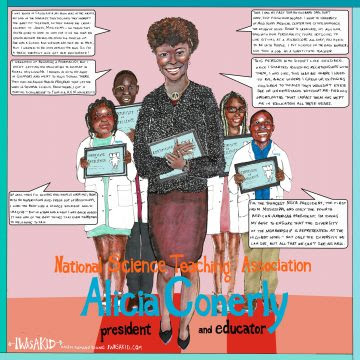Picture a 12-year-old. It’s 8 p.m. on a school night. Homework is finished, responsibilities have been fulfilled, and it’s wind-down time. What will they choose to do with this time? According to current surveys and sales records, it’s unlikely that this young person will be picking up a book to read.

“Is There a Reading Recession?” This is the title of a recent article shared on the Scholastic Blog. It echoes the concerns expressed in a previous Mixed-Up Files post about “The Middle Grade Slump.” A documented decrease in middle grade book sales is a symptom. The real issue is the sharp decline in the amount of reading that kids up to the age of 18 engage in for pleasure.
Maybe reading for pleasure is a thing of the past. It’s a hobby. There are other hobbies. Reading is just a skill-set learned in school, right? Wrong. The benefits of reading for pleasure are broad and well-documented. Reading for pleasure builds empathy, social adjustment, and self-esteem. Research has shown that reading for pleasure boosts academic achievement and is associated with overall success in life.
However, according to a National Literacy Trust survey, children’s engagement and enjoyment in reading are the lowest they’ve been in two decades. What can be done to reverse this trend? We need to revitalize the culture of reading, and it’s up to adults to lead the way.
Parents

Parents are the most important stakeholders in creating a culture of reading. From the earliest ages, before children have even developed language, books should be shared. Sharing a book between parent and child enriches children in multiple ways. It builds vocabulary, introduces children to concepts of print, and creates a positive emotional climate around reading. As children age, even if they can’t remember these shared experiences, they are stronger readers who maintain the positive feelings developed in that early emotional context.
Even when children begin to read independently, it’s important to continue to read TO the big kids. When adults read aloud, they model prosody, which is the rhythm and intonation we use to be expressive with language. They model respect for the act of reading and appreciation for books. Children’s vocabulary and comprehension skills are built through listening, and the positive emotional climate around the act of reading is nurtured and sustained.
Visiting libraries and bookstores sends an unspoken message that books have value and that reading is part of your family culture. Parents are the most crucial influences in creating a culture of reading, and by reading to, reading with, and reading alongside children, parents demonstrate a dedication to and appreciation for reading.
Teachers and Schools

As a veteran teacher, I can personally attest to the importance of classroom libraries, shared read-alouds, and a dedicated time for daily individual reading. However, increased demands on instructional time creates overburdened schedules, and current concerns over book challenges have created a culture of fear in many schools.
Most educators understand that teaching reading skills must go hand-in-hand with fostering reading engagement. Literacy-rich environments are necessary in order for students to develop as readers. But teachers can’t do this alone. Parents and administrators must support immersive literary atmospheres in classrooms.
Classroom libraries should be well-stocked with a diverse selection of genres and reading levels so that students can identify their own preferences as readers. Virtual and in-person author visits generate great hype around books and should be scheduled throughout the year. Grants, partnerships with independent bookstores, and relationships with businesses and community organizations can help fund author events.
Finally, teachers who develop a positive climate around books are those who model a love of reading. They read aloud to students daily and build connection and community through literature. They talk about reading, discuss books they love, and provide recommendations based on students’ individual interests and preferences.
Librarians and Booksellers

Let’s create some hype around books! The July 8, 2024 issue of Publisher’s Weekly showcased the activities of some forward-thinking booksellers who have been successful at revitalizing reading among young patrons. Subscription boxes, themed dinners, and author visits have all proven effective in engaging young readers in the pleasure of reading.
Big box stores are now selling kids’ books, and the accessibility of literature at the same place where families might be shopping for clothing, school supplies, hardware, or groceries deserves attention. These stores should be encouraged to provide a wide variety of books for every age and type of reader.
Libraries can (and usually do) engage in programming designed to inspire a love of reading. Book clubs, community reads, and thematic events can draw young readers in and help them connect with literature. Reading aloud to the youngest readers while also providing a safe space for teen readers is a true balancing act. As showcased at the recent ALA conference, librarians are heroes, whether or not they wear capes.
It’s Time for Action
Let’s return to that 12-year-old. Maybe it’s laughable to assume that there’s any downtime. Between extracurricular activities, often-excessive amounts of homework, and the lure of ever-present electronics, even if there is downtime, why would a kid choose to read? Our culture has changed…but it’s not the kids who changed it.
The benefits of reading for pleasure are well-documented, and the trend away from reading for pleasure is not shifting toward the positive. It’s time to reverse the trend. A cultural revitalization that includes an appreciation for books and a habit of reading for pleasure is needed, and it’s up to the adults to make it happen.





 Camp QUILTBAG by Nicole Melleby & A. J. Sass (2023)
Camp QUILTBAG by Nicole Melleby & A. J. Sass (2023)

